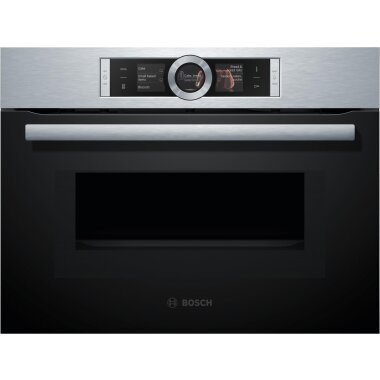Microwaves are a staple in modern kitchens, providing a quick and convenient way to heat food. Bosch, known for its high-quality kitchen appliances, offers a range of microwaves that are popular for their reliability and efficiency. However, like any appliance, they can sometimes run into problems. One common issue that users may encounter is the microwave not heating. In this post from TheKitchenApplianceDad.com, we’ll explore why your Bosch microwave might not be heating and what steps you can take to address the issue.
Before diving into troubleshooting, it’s essential to understand some common reasons behind a microwave that won’t heat. Here are a few potential causes:
Ensure that your microwave is properly plugged into a functioning outlet. Sometimes, the problem could be as simple as a tripped circuit breaker or a blown fuse.
The door switch signals the microwave to start heating once the door is securely closed. If this switch is defective, the microwave won’t heat, as it doesn’t receive the signal to start.
The magnetron is the component that generates the microwaves used to heat your food. If it’s faulty or burned out, the microwave will run but not heat.
The diode converts A/C power to D/C, doubling the voltage to nearly 5,000 volts. This high voltage powers the magnetron. A burnt diode results in a lack of heating.
A faulty capacitor can also lead to heating issues. The capacitor works with the diode to convert the high voltage that powers the magnetron.

If your Bosch microwave is not heating, follow these troubleshooting steps to try and resolve the issue. Remember, safety is paramount when dealing with electrical appliances, so if you’re not comfortable performing these checks, it’s advisable to contact a professional technician.
While some issues can be diagnosed and fixed at home, there are instances where it’s best to contact a professional:
If you’re facing issues with your Bosch microwave not heating, following these steps can help you identify and possibly fix the problem. Remember, safety is crucial, and when in doubt, it’sadvisable to consult with a professional repair technician. By understanding the common causes and exploring easy fixes, you can potentially save time and money on repairs. However, for more complicated issues, professional expertise may be necessary to ensure your microwave runs smoothly again.
For more insightful tips and advice on kitchen appliances, keep visiting us at TheKitchenApplianceDad.com, where we strive to make your kitchen experiences better and more efficient. Happy cooking!

